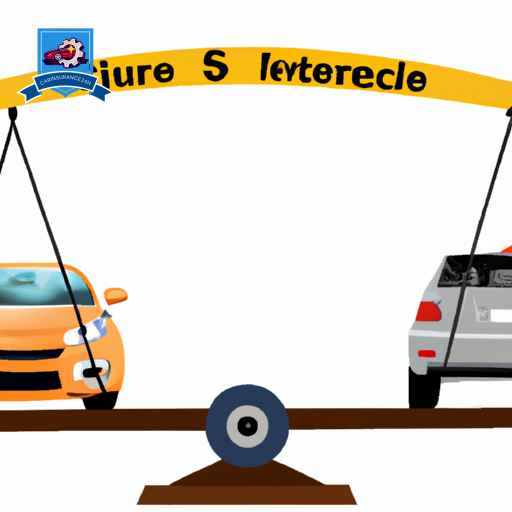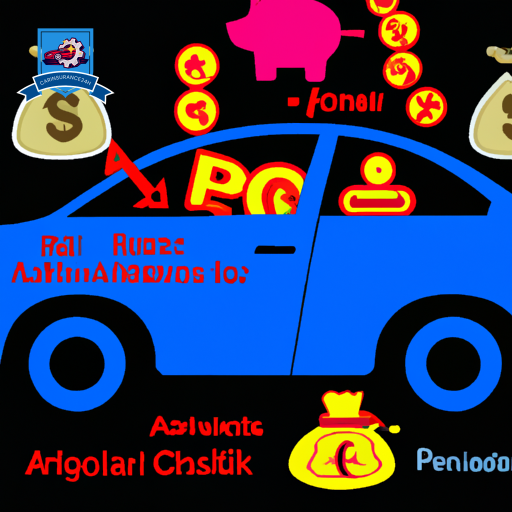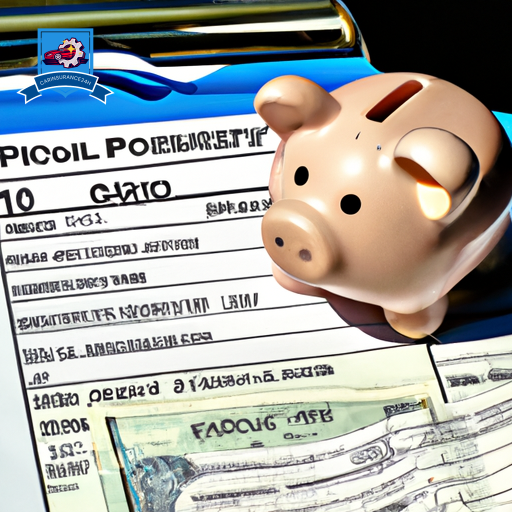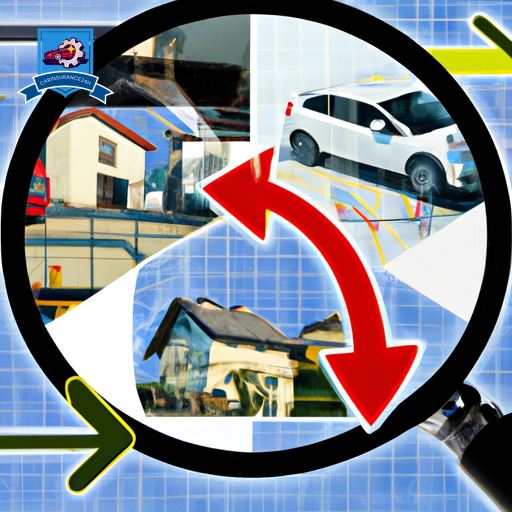The relationship between parking location and car insurance costs remains a critical yet often overlooked aspect of policy evaluation. Insurers meticulously assess risk factors associated with vehicle theft and damage, markedly influenced by where a vehicle is habitually parked. Garage parking, for instance, is perceived as a safer option compared to street parking, leading to potential reductions in insurance premiums.
However, the nuances of such benefits, alongside the comparative advantages of secure lot parking, require further exploration. This discussion invites a deeper examination into how these parking choices not only affect insurance costs but also present opportunities for policyholders to negotiate more favorable terms.
Understanding Insurance Risk Factors

To thoroughly assess how parking location impacts car insurance costs, it is important to first understand the different risk factors that insurance companies consider. Among these, driving habits and weather influences play a significant role in determining the level of risk associated with insuring a vehicle. Driving habits, encompassing the frequency of use, the time of day the vehicle is typically operated, and the nature of the driving (e.g., highway vs. city driving), directly influence the likelihood of accidents occurring. Vehicles frequently used for long commutes, especially during peak traffic hours, are perceived as higher risk due to the increased probability of involvement in collisions.
Similarly, weather influences play a significant role in risk assessments. Areas prone to extreme weather conditions, such as heavy snowfall, hurricanes, or floods, present higher risks for damage to vehicles. Insurance companies meticulously analyze historical weather patterns and forecasts to adjust their risk models accordingly. The parking location, in relation to these weather influences, becomes a critical factor in the insurance evaluation process. Vehicles parked in areas with high exposure to adverse weather conditions without protective shelter are deemed at higher risk for weather-related damage, which in turn can elevate insurance premiums.
Understanding these risk factors illuminates why insurance companies place considerable emphasis on parking locations when determining insurance costs. It is not solely the immediate physical security of the parking spot that is at stake but also how the location interacts with broader risk factors like driving habits and weather influences. This thorough risk assessment ensures that premiums accurately reflect the level of risk associated with insuring the vehicle.
Parking Locations and Theft Risk

The relationship between parking locations and the risk of theft plays a significant role in determining car insurance costs.
Parking in urban areas, compared to rural settings, often presents a higher risk of theft, influencing insurance premiums.
Additionally, the use of secure parking facilities can mitigate this risk, potentially lowering insurance costs for vehicle owners.
Urban Vs Rural Parking
Several studies have demonstrated a significant correlation between parking locations, specifically urban versus rural environments, and the risk of car theft, impacting insurance costs. Urban areas, often characterized by higher population densities, exhibit elevated theft rates compared to their rural counterparts. This discrepancy influences insurance companies to adjust their premiums accordingly.
The issuance of parking permits in urban zones has been identified as a mitigating factor, yet it does not fully offset the inherent risk. Additionally, seasonal variations introduce a dynamic element to theft risks, with certain times of the year witnessing a surge in incidents. This variability necessitates a nuanced understanding of parking environments when evaluating insurance costs, highlighting the complexity of factors beyond mere geographic categorization.
Secure Facilities Impact
Implementing secure parking facilities greatly diminishes the risk of car theft, influencing insurance premiums in both urban and rural environments. These facilities, characterized by enhanced security measures, directly impact the likelihood of vehicle theft. Enhanced lighting conditions and valet accountability are critical components of these secure environments, contributing to their effectiveness in mitigating theft risks.
| Feature | Impact on Theft Risk |
|---|---|
| Enhanced Lighting | Reduces hiding spots and increases visibility, deterring theft |
| Valet Accountability | Ensures each vehicle is monitored and managed responsibly |
| Surveillance Systems | Provides continuous monitoring, deterring potential thieves |
| Controlled Access | Limits entry to unauthorized individuals, reducing theft opportunities |
These measures collectively guarantee a lower risk profile for vehicles parked within secure facilities, leading to potentially lower car insurance costs for vehicle owners.
Garage Parking Benefits Explained

Garage parking offers distinct advantages that directly impact car insurance costs and vehicle security. By parking a vehicle in a garage, owners can benefit from reduced insurance premiums due to the lower risk of theft and damage.
Additionally, the enhanced security provided by garage parking further protects the vehicle from potential external threats.
Reduced Insurance Premiums
Parking your vehicle in a garage can greatly lower your car insurance premiums by reducing the risk of theft and damage. Insurers often evaluate the likelihood of claims based on the parking arrangements of the insured vehicle. A garage-parked car presents a lower risk profile, leading to potentially significant policy discounts. These reductions reflect the diminished probability of vandalism, accidents, and environmental damages compared to street-parked vehicles.
Additionally, insurers might also consider garage parking as an indicator of responsible driving habits, further influencing premium calculations. Consequently, vehicle owners who secure their cars in garages may benefit from lower insurance costs, thanks to the perceived decrease in risk associated with protected parking environments.
Enhanced Vehicle Security
Beyond the financial advantages, securing a vehicle in a garage greatly enhances its security against theft and unauthorized access. This protective measure greatly deters potential threats, largely owing to the integration of advanced vehicle alarms and anti-theft devices which provide an additional layer of security. The benefits of garage parking extend beyond mere theft prevention, encompassing a broader spectrum of vehicle protection mechanisms.
| Feature | Description | Impact on Security |
|---|---|---|
| Vehicle Alarms | Emit loud alerts upon unauthorized entry attempts | High |
| Anti-Theft Devices | Prevent the vehicle from being started or moved | Very High |
| Garage Parking | Shields vehicle from direct access by potential thieves | Substantial |
| Visibility | Reduces the likelihood of vehicular scrutiny | Moderate |
| Access Control | Restricts entry to authorized individuals only | Significant |
These components, when synergistically combined, create a formidable defense against the myriad of risks vehicles face when parked outdoors.
Street Parking Risks

Vehicles parked on the street face an elevated risk of theft and vandalism, directly impacting insurance premiums. This heightened vulnerability stems not only from the increased accessibility of the vehicles to potential criminals but also from the lack of protective measures often found in more secure parking environments. Insurance companies recognize these increased risks and adjust their rates accordingly to mitigate potential losses.
Additionally, street-parked vehicles are considerably more susceptible to weather damage. Exposed to the elements, these vehicles can suffer from hail damage, flooding, or even the wear and tear of prolonged exposure to sunlight, which can fade paint and damage interiors. Such weather-related damages contribute to an increase in insurance claims, compelling insurers to raise premiums for vehicles regularly parked on the street.
Accident rates also play an important role in the calculation of insurance premiums for street-parked vehicles. Cars parked along roadside curbs are more likely to be involved in accidents, whether from passing vehicles misjudging distances or from being hit by other cars attempting to park adjacent to them. These incidents not only lead to direct damage to the vehicle but also potentially increase the likelihood of insurance claims, further influencing insurance costs.
The correlation between street parking and elevated insurance premiums is significant, with insurers meticulously evaluating the risks associated with theft, vandalism, weather damage, and accident rates. Vehicle owners who regularly park their cars on the street must be aware of these implications, as they directly influence the cost of their car insurance.
Secure Lot Parking Advantages

Opting for secure lot parking offers vehicle owners important advantages with regards to safety and potential reductions in insurance costs. This choice, while sometimes overlooked due to concerns over parking fees, provides a protective environment that greatly decreases the likelihood of theft and vandalism. Secure lots often come with advanced security measures that not only deter potential criminals but also contribute to the overall safety of the parked vehicles.
Among the benefits of choosing secure lot parking, three stand out:
-
Enhanced Security Measures: Secure lots are equipped with various security measures such as surveillance cameras, security personnel, and controlled entry and exit points. These features greatly reduce the risk of theft and vandalism, providing vehicle owners with peace of mind.
-
Lighting Improvements: Adequate lighting is an important aspect of vehicle safety. Secure parking lots often invest in substantial lighting improvements, ensuring that the vehicles are visible and the area is well-lit at all times. This not only deters potential thieves but also minimizes the risk of accidental damage to parked vehicles.
-
Reduced Risk of Damage: Vehicles parked in secure lots are less likely to suffer accidental damage from passing vehicles or adverse weather conditions, thanks to the protective measures in place. This includes not just physical barriers but also the strategic placement of vehicles to minimize potential impacts.
While parking fees associated with secure lots may initially deter some vehicle owners, the long-term benefits, including the enhanced safety and potential for reduced insurance costs, make it a worthwhile investment.
Impact on Insurance Premiums

Acknowledging the safety benefits of secure lot parking, it’s important to examine how these choices can influence car insurance premiums. Insurance companies assess risk based on numerous factors, including where a car is parked overnight. Parking in a secure lot can signal to insurers that the vehicle is less likely to be stolen or vandalized, potentially leading to lower premiums. However, the impact on insurance costs extends beyond the immediate safety perks.
Driving habits and weather conditions are also critical factors that insurers consider. Cars parked on the street may be more susceptible to damage from passing vehicles or adverse weather, increasing the risk profile and, consequently, the insurance premiums. Conversely, vehicles housed in secure, covered lots are shielded from such elements, potentially reducing the likelihood of claims related to exterior damage.
To emphasize the relationship between parking locations, driving habits, and insurance premiums, consider the following table:
| Parking Location | Impact on Driving Habits | Potential Impact on Premiums |
|---|---|---|
| Street Parking | Increased risk of damage | Higher premiums |
| Secure Lot | Reduced risk of theft | Lower premiums |
| Covered Garage | Shielded from weather | Lower premiums |
| Driveway | Moderate protection | Moderate premiums |
This table illustrates how parking choices can influence both the vehicle’s risk profile and the owner’s driving habits. Secure and covered parking options not only offer protection from theft and weather conditions but also have the potential to positively impact insurance premiums. Insurers take these factors into account when determining rates, showcasing the intricate relationship between parking decisions and insurance costs.
Tips for Lowering Costs

To effectively reduce car insurance costs, drivers should consider implementing strategic measures that target both their parking practices and overall risk profile. Focusing on these areas can lead to substantial savings, as insurers often assess risk based on where and how a vehicle is parked, as well as the driver’s behavior on the road. By adopting safer driving habits and taking advantage of policy discounts, drivers can strategically lower their insurance premiums.
Here are three practical tips for lowering car insurance costs:
-
Improve Driving Habits: Insurers typically offer discounts to drivers who maintain a clean driving record. By avoiding accidents and traffic violations, drivers demonstrate to insurance companies that they pose a lower risk. Implementing defensive driving techniques and adhering to traffic laws can significantly enhance one’s driving habits, leading to lower insurance rates.
-
Utilize Policy Discounts: Many insurance companies offer a variety of discounts that policyholders may not be fully aware of. These can include discounts for multiple vehicles, bundling insurance policies (e.g., auto and home insurance), and even for completing safe driving courses. Drivers should actively inquire about available discounts and take steps to qualify for them, as this can lead to substantial savings on premiums.
-
Adjust Coverage Levels: Drivers should regularly review their insurance coverage to make sure it aligns with their current needs. Over time, the value of a vehicle may decrease, making certain types of coverage less necessary. By adjusting coverage levels accordingly, drivers can avoid paying for unnecessary protection, thereby reducing their overall insurance costs.
Evaluating Your Parking Options

After exploring ways to lower car insurance costs through improved driving habits and policy adjustments, it is equally important to take into account how selecting the right parking location can further impact these expenses. The choice of parking, whether at home or while at work, plays a significant role in determining the risk profile associated with a vehicle, which in turn, influences insurance premiums.
Securing a parking space in a safe, well-lit area can mitigate the risk of theft and vandalism, thereby potentially reducing insurance costs. In contrast, parking in areas known for high crime rates may result in higher premiums due to the increased risk. Insurance providers often consider these factors when calculating rates, emphasizing the importance of selecting a secure parking location.
Additionally, the acquisition of parking permits for designated areas can offer a vital benefit. Firstly, it guarantees a reserved spot in a potentially safer location, and secondly, it may be viewed favorably by insurance companies as a proactive measure in safeguarding the vehicle. This could lead to more favorable insurance terms.
Weather conditions also play an important role in evaluating parking options. Parking outdoors without cover in regions prone to severe weather can expose a vehicle to damage from hail, flooding, or falling debris, increasing the likelihood of claims and, therefore, higher premiums. Opting for covered or indoor parking, when possible, protects the vehicle and can be advantageous in terms of insurance costs.
Negotiating With Insurance Providers

Understanding the intricacies of insurance policies enables vehicle owners to negotiate more effectively with their providers for better rates. These negotiations can greatly influence the premiums, especially when considering the impact of parking locations on insurance costs. Successful negotiation hinges on a well-informed approach that emphasizes policy customization, a clear understanding of the claim process, and the ability to present one’s case convincingly.
To aid in these discussions, vehicle owners should consider the following strategies:
-
Policy Customization: Tailoring your policy to match your specific needs can lead to substantial savings. Discuss with your insurance provider the possibility of adjusting coverage options based on your parking arrangements. For instance, a secured garage might merit a lower premium compared to street parking due to reduced risk.
-
Understanding the Claim Process: Familiarity with the claim process is essential. Demonstrating an understanding of how claims related to parking locations are handled can put you in a stronger negotiating position. It indicates to the provider that you are knowledgeable and attentive to the details of your policy.
-
Effective Communication: Present your case clearly, highlighting how your parking situation mitigates risks that concern the insurer. Whether it’s the installation of security features in your parking area or choosing a location with lower crime rates, these factors can influence the insurer’s assessment of risk and, consequently, your premium.
Negotiating with insurance providers requires a blend of knowledge, preparation, and communication skills. By focusing on these key areas, vehicle owners can achieve more favorable insurance terms that reflect their specific parking circumstances and risk profile.
Frequently Asked Questions
How Does the Color of My Car Affect Insurance Rates in Relation to Parking Locations?
The color of your car, like a chameleon’s skin, subtly influences insurance rates, yet its impact pales in comparison to factors such as safety ratings and maintenance costs, which insurers prioritize in their evaluations.
Can Installing a Dashcam in My Car Lower Insurance Costs Even if I Park on the Street?
Installing a dashcam in a vehicle can potentially lower insurance costs due to its role in incident documentation. However, considerations include dashcam legality in certain jurisdictions and the initial costs associated with its installation.
Are There Any Differences in Insurance Costs for Electric Vehicles Versus Gasoline Vehicles When Considering Parking Options?
Insurance costs for electric vehicles may differ from gasoline vehicles, as the former hinges on the availability of charging infrastructure and potentially lower maintenance costs, influencing premiums irrespective of parking options.
How Does the Frequency of Moving My Parked Car Impact Its Insurance Costs?
Frequent changes in a vehicle’s parking location can influence insurance premiums. Insurers may offer discounts for consistent, secure parking habits, as these reduce the risk of theft or damage, potentially lowering overall insurance costs.
Do Insurance Companies Offer Temporary Coverage Adjustments for Periods When I Know My Car Will Be Parked in a Less Secure Location, Such as During a Vacation?
Insurance companies may offer policy customization options, including vacation discounts, to adjust coverage for temporary situations where a vehicle is parked in a less secure location, ensuring clients receive tailored protection according to their needs.










